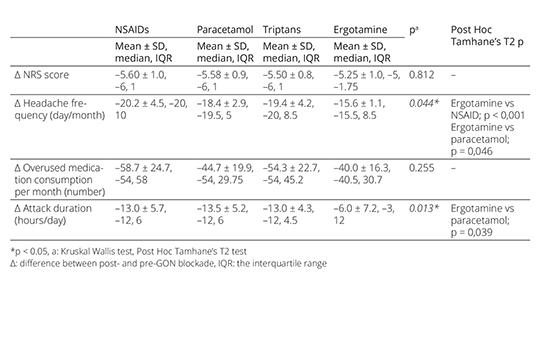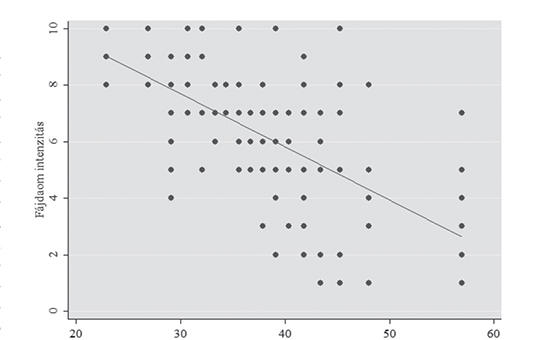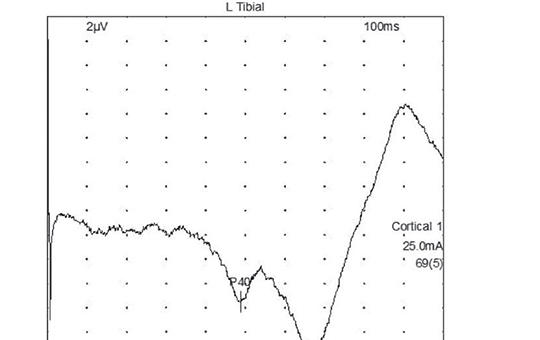The eLitMed.hu medical portal uses computer cookies for convenient operation. Detailed information can be found in the Cookie-policy.
Specialities
Neurology
The effect of anesthetic blockade of greater occipital nerve during the withdrawal period of the medication overuse headache treatment
Discontinuation of medication still remains a key element in the treatment of medication overuse headache (MOH), but there is no consensus on the withdrawal procedure. We aimed to share the promising results of anesthetic blockade of greater occipital nerve (GON), which can be an alternative to existing treatments during the early withdrawal period of MOH treatment.
Validity and reliability of the Turkish version of the Informant Assessment of Geriatric Delirium Scale
Delirium is a common complication developing in elderly patients. Therefore, it is important to diagnose delirium earlier. Family caregivers play an active role in early diagnosis of delirium and build a bridge between health professionals and patients. The purpose of this research was to achieve the validity and reliability of the Turkish version of the Informant Assessment of Geriatric Delirium Scale (IAGeD).
Perineural 5% dextrose versus corticosteroid injection in non-surgical carpal tunnel syndrom treatment
We aimed to investigate the difference of clinical and electrophysiological improvement between perineural corticosteroid injection therapy and perineural 5% dextrose injection therapy in carpal tunnel syndrome. Total of 92 wrists that were diagnosed as mild-to-moderate idiopathic CTS and completed their follow-up were included in our study. The severity of pain, symptom severity and functional status were assessed by visual analog scale.
[Comparison of pain intensity measurements among patients with low-back pain]
[Pain intensity is the most frequently assessed health domain in clinical studies among patients with low-back pain. Visual analogue scale (VAS) and Numeric rating scale (NRS) have been the mostly used measurement tools for pain intensity. We proposed to correlate these instruments to a generic health-related quality of life measurement tool in order to show the scale with superior clinical relevance.
We used cross-sectional, convenience sampling. 120 patients with chronic low-back pain administered the 29-item Patient Reported Outcomes Measurement Information System Profile with NRS included, and the VAS scale in the National Institute of Mental Health, Neurology and Neurosurgery. We determined the correlation between PROMIS domain T-scores and VAS and NRS scores.
We performed Spearman rank correlation test to calculate the correlation coefficient. We found VAS scales measuring pain had weak to moderate correlations with all PROMIS health domains (r = 0.24–0.55). Therefore, we compared correlation of PROMIS domain scores with PROMIS pain intensity numeric rating scale and VAS scales. PROMIS domains had moderate to strong correlations with pain intensity scale (r = 0.45–0.71). PROMIS physical function short form [r = –0.65, 95% CI (–0.75) – (–0.55)] and PROMIS pain interference short form (r = 0.71, 95% CI 0.63 – 0.79) had the strongest correlation with pain intensity item.
NRS has showed greater correlation with PROMIS domain T-scores than VAS scale. This may prove that NRS has greater connection to another health domains, thus it correlated more to health-related quality of life than visual scale. We recommend NRS to use in further clinical studies conducted among patients with low-back pain.]
Lightning strike‑induced cauda equina syndrome: a case report
Peripheral nerve injuries after being struck by lightning have been documented. Here, we report a case of cauda equina syndrome induced by lightning. A 27-year-old man presented with numbness, a burning sensation in the saddle region, and increased urinary urgency after being struck by lightning. He had absent Achilles reflexes and paresthesia in the saddle region upon neurological examination, and magnetic resonance imaging of the spine was normal.
[Significance and diagnosis of diabetic neuropathy in clinical practice]
[Diabetic neuropathy is an early detectable microvascular complication of diabetes. Most often, we can recognize it by its symptoms of distal-type symmetric polyneuropathy, further the damage to the autonomic nervous system is increasing the cardiovascular mortality. Screening for diabetic neuropathy is essential in clinical practice, since the signs of nerve damage related to diabetes can be detected at an early stage and open the way to therapeutic interventions. Proper diagnosis and continuous monitoring of diabetic neuropathy is also important during the patient care. This summary concerns the importance and diagnostic options of diabetic neuropathy for clinical practice.]
1.
Clinical Neuroscience
[Headache registry in Szeged: Experiences regarding to migraine patients]2.
Clinical Neuroscience
[The new target population of stroke awareness campaign: Kindergarten students ]3.
Clinical Neuroscience
Is there any difference in mortality rates of atrial fibrillation detected before or after ischemic stroke?4.
Clinical Neuroscience
Factors influencing the level of stigma in Parkinson’s disease in western Turkey5.
Clinical Neuroscience
[The effects of demographic and clinical factors on the severity of poststroke aphasia]1.
2.
3.
4.
5.









